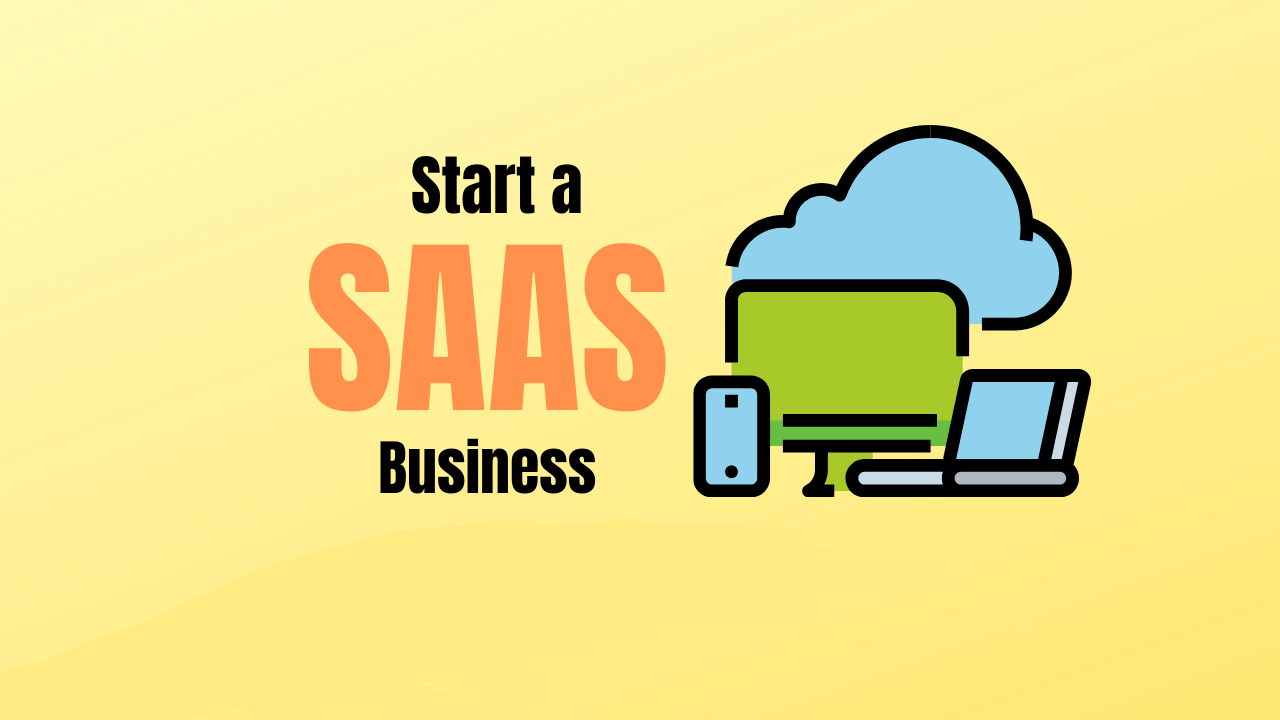Starting a SaaS (Software as a Service) business can be an exciting journey, offering immense opportunities for growth and scalability. With the right strategies, a clear roadmap, and an understanding of the industry, you can transform your SaaS startup idea into a thriving business. In this guide, we’ll break down the essential steps to build a successful SaaS startup.
Introduction
If you’re considering launching a SaaS startup, you’re entering a promising space that has witnessed incredible growth in recent years. SaaS refers to software delivered over the internet, eliminating the need for users to install, manage, or maintain software themselves. Instead, they pay for access on a subscription basis.
Why should you consider a SaaS startup?
- Scalability: SaaS businesses can grow quickly without the need for extensive infrastructure or upfront hardware investments.
- Recurring Revenue: With subscription-based models, you have predictable and continuous income streams.
- Low Barriers to Entry: Compared to traditional software businesses, SaaS has relatively low entry costs.
This guide will walk you through each crucial step—from finding your niche to building and scaling your SaaS startup—ensuring your business is set up for long-term success.
Understanding SaaS and Its Potential
What is SaaS?
SaaS stands for “Software as a Service.” It refers to software applications delivered over the internet, allowing users to access them without needing to install or maintain the software on their devices. Instead, businesses pay a subscription fee to access these applications through the cloud.
Benefits of the SaaS Business Model
- Lower Costs: SaaS reduces upfront capital expenditure by eliminating the need for hardware and servers.
- Recurring Revenue: Subscription-based models ensure predictable cash flow and long-term customer relationships.
- Scalability: SaaS products can be scaled easily, accommodating more users without significant additional costs.
- Continuous Updates: With SaaS, software is regularly updated, ensuring users always have access to the latest features.
Key SaaS Growth Statistics
- Global SaaS market size: Expected to reach $307 billion by 2026.
- Growth rate: The SaaS market is growing at a CAGR (compound annual growth rate) of 18.5%.
These numbers highlight the vast potential and opportunities available to SaaS startups.
Identifying a Niche Market
Why Niche Selection Matters
Choosing the right niche is crucial for the success of your SaaS startup. A broad market can make it challenging to stand out, while a well-defined niche helps you focus your resources on a specific group of customers.
Steps to Research and Validate a SaaS Idea
- Identify Pain Points: What problems are businesses or users experiencing?
- Market Research: Analyze existing competitors and uncover gaps in the market.
- Target Audience: Define your ideal customer, including demographics, industry, and specific needs.
- Validate Your Idea: Use surveys, customer interviews, and beta testing to ensure demand.
Trends Shaping SaaS Industries
- Remote Work Solutions: Cloud-based tools for collaboration, project management, and communication are growing rapidly.
- Customer Experience Tools: SaaS platforms offering improved customer engagement and support are in high demand.
- Niche Automation Tools: Specialized SaaS solutions targeting industries like healthcare, e-commerce, or finance are gaining traction.
Researching Competitors and Industry Trends
Competitor Analysis and Market Landscape
Understanding who your competitors are and what they offer is critical. Start by identifying direct and indirect competitors. Tools like SEMrush, Google Trends, and LinkedIn help assess industry trends and competitor positioning.
Identifying Gaps in the Market
Look for unaddressed needs or areas where competitors have weaknesses. Some questions to ask:
- Are there underserved customer segments?
- Are there usability issues in the existing solutions?
- Is there a lack of integration or compatibility with other tools?
Market Research Tools
- Survey Tools: Platforms like Typeform or SurveyMonkey help gather customer feedback.
- Google Analytics & Search Console: Provide insights into search behavior and demand trends.
- Competitor Analysis Tools: Utilize tools like Ahrefs or Moz to analyze backlink profiles and identify competitors.
Building a SaaS Startup Plan
Creating a Detailed Business Plan
A solid business plan is the foundation of your SaaS startup. It outlines your strategy, goals, and expected outcomes.
- Executive Summary: Brief overview of your SaaS product and vision.
- Market Analysis: Understanding of your target market, competitors, and industry trends.
- Revenue Model: Freemium, subscription, or other pricing strategies.
- Product Development Plan: Roadmap, MVP development, and feature priorities.
- Financial Projections: Estimated revenue, costs, and funding needs.
Defining Goals and Objectives
- Short-term goals: Developing a functional MVP, gathering feedback, and attracting early adopters.
- Long-term goals: Achieving product-market fit, scaling the business, and optimizing growth.
Outlining Key Metrics for Success
- Customer Acquisition Cost (CAC): How much you spend to acquire a customer.
- Customer Lifetime Value (CLTV): The total revenue a customer brings during their relationship.
- Churn Rate: The rate at which customers stop using your service.
- Monthly Recurring Revenue (MRR): Essential for tracking predictable revenue growth.
Developing Your SaaS Product
Choosing the Right Technology Stack
Your choice of technology impacts scalability, performance, and ease of maintenance.
- Frontend: React, Angular, or Vue.js for UI development.
- Backend: Node.js, Ruby on Rails, or Django for server-side development.
- Cloud Services: AWS, Google Cloud, or Azure for hosting and infrastructure.
- Databases: PostgreSQL, MySQL, or NoSQL databases like MongoDB.
UX/UI Design and User Experience Considerations
Creating a seamless user experience is vital for customer retention.
- Simplicity and Intuitiveness: Design clean interfaces with easy navigation.
- Mobile Responsiveness: Ensure your product works flawlessly across all devices.
- Feature Prioritization: Focus on core features that solve customer pain points.
Product Features and Functionality
- Core Features: Identify must-have features based on customer feedback.
- Customization: Allow users to tailor the solution to their specific needs.
- Scalability & Integrations: Ensure your SaaS product integrates well with other popular tools.
Establishing a Strong Value Proposition
Differentiating Your SaaS Product
What makes your product stand out? A strong value proposition ensures customers choose your SaaS over competitors.
- Unique Selling Points (USPs): Highlight features, performance, or pricing advantages.
- Pain-Relief Focus: Address specific challenges your target audience faces.
- Customer Testimonials & Case Studies: Build trust with social proof.
Messaging that Resonates
- Customer-Centric Language: Speak directly to your audience’s needs.
- Clear Benefits: Focus on how your SaaS simplifies or improves their lives.
Setting Up a Revenue Model
Freemium vs. Paid Models
- Freemium: Offer basic features for free, with premium upgrades.
- Subscription-based: Monthly, quarterly, or annual pricing depending on customer value.
- Usage-Based Pricing: Charge based on consumption (e.g., number of users or data usage).
Subscription Pricing Strategies
- Tiered Pricing: Offer different levels of service at varying price points.
- Value-Based Pricing: Charge based on the value you provide rather than features.
- Per-User Pricing: Charge per user or feature used.
Customer Acquisition Cost (CAC) vs. Customer Lifetime Value (CLTV)
Ensure your CAC is lower than your CLTV to maintain profitability.
Building a Minimum Viable Product (MVP)
Why an MVP is Crucial
An MVP is a stripped-down version of your product with essential features. It helps you validate your idea, gather feedback, and iterate.
- Faster Development: Focus on what matters most to customers.
- Testing & Iteration: Collect real-world data to refine your product.
Steps to Develop an MVP
- Define Core Features: Prioritize essential functionality.
- Develop & Launch: Build the MVP using your chosen tech stack.
- Test & Iterate: Gather user feedback to improve your product.
Launching and Marketing Your SaaS Product
Developing a Go-to-Market Strategy
A solid strategy ensures your product reaches the right audience.
- Content Marketing: Blog posts, guides, and videos to establish thought leadership.
- SEO & SEM: Optimize your website for search engines to improve visibility.
- Social Media & Influencers: Leverage social platforms to attract early adopters.
Strategies for Generating Early Adopters
- Beta Programs: Offer early access and reward feedback.
- Product Hunt Launches: Generate buzz through platforms like Product Hunt.
- Partnerships & Affiliates: Collaborate with relevant industry players.
Customer Acquisition and Retention Strategies
Building a Sales Funnel for SaaS
- Awareness: Create content that educates your audience.
- Consideration: Provide free trials or demos to entice users.
- Conversion: Offer incentives like discounts or value-added services.
Customer Onboarding & Support
- User Experience: Make onboarding seamless with easy guides and tutorials.
- Support Channels: Offer 24/7 customer support via chat, email, or forums.
Strategies for Retaining Customers
- Regular Updates & Enhancements: Keep your product evolving based on feedback.
- Loyalty Programs: Reward customers for long-term usage.
- Community Building: Engage your customers through forums, webinars, and newsletters.
Scaling and Growing Your SaaS Business
Scaling Strategies and Challenges
- Automation & Outsourcing: Streamline operations and reduce costs.
- Building Partnerships: Collaborate with other SaaS providers for integrations.
- Hiring & Team Building: Expand your team with skilled professionals.
Common Scaling Challenges
- Maintaining Product Quality: Balancing growth with quality control.
- Customer Support: Scaling customer support while maintaining quality.
Financial Planning and Funding Options
Bootstrapping vs. Funding
- Bootstrapping: Self-funded, lower risk, but slower growth.
- Funding Options:
- Seed Funding: Initial capital from investors or grants.
- VC Funding: Venture capital for scalability and growth.
- Crowdfunding: Raise funds through platforms like Kickstarter or Indiegogo.
Financial Models and Projections
- Revenue Forecasting: Predict income, expenses, and profitability.
- Break-Even Analysis: Determine when your SaaS will become profitable.
Measuring Success: Metrics and KPIs
Key SaaS Metrics to Track
- Customer Acquisition Cost (CAC)
- Customer Lifetime Value (CLTV)
- Churn Rate
- MRR (Monthly Recurring Revenue)
- Net Promoter Score (NPS): Measure customer satisfaction and loyalty.
Tools for Measuring Performance
- Google Analytics
- Mixpanel
- HubSpot
Common Challenges and How to Overcome Them
Common Pitfalls in SaaS Startups
- Product-Market Fit: Ensure your product solves actual customer problems.
- High Customer Churn: Focus on improving customer retention strategies.
- Funding Issues: Secure enough funding to support growth while avoiding overspending.
Tips for Overcoming Challenges
- Continuous Feedback Loop: Regularly refine your product based on customer insights.
- Strong Community Engagement: Build trust and long-term relationships.
- Flexible Approach: Adapt to changing market conditions and customer needs.
Conclusion
Building a successful SaaS startup requires careful planning, research, and persistence. By following these steps—identifying a niche, developing a strong value proposition, creating an MVP, and focusing on customer acquisition and retention—you’ll position yourself for long-term success. Remember, SaaS startups face unique challenges, but with the right mindset and strategies, you can overcome obstacles and scale your business effectively.
FAQs
- What are the key challenges of starting a SaaS business?
Common challenges include customer acquisition, maintaining a strong product-market fit, and managing churn. - How do I identify my SaaS niche market?
Research customer pain points, analyze competitors, and validate demand with surveys and interviews. - What’s the difference between SaaS subscription models?
Freemium provides basic features for free, while subscription-based offers tiers of paid plans. - How can I ensure my SaaS product stands out in a competitive market?
Focus on unique selling points, strong value propositions, and offering features that address customer pain points. - What metrics should I track to measure SaaS success?
Key metrics include Customer Acquisition Cost (CAC), Customer Lifetime Value (CLTV), MRR, churn rate, and NPS.




